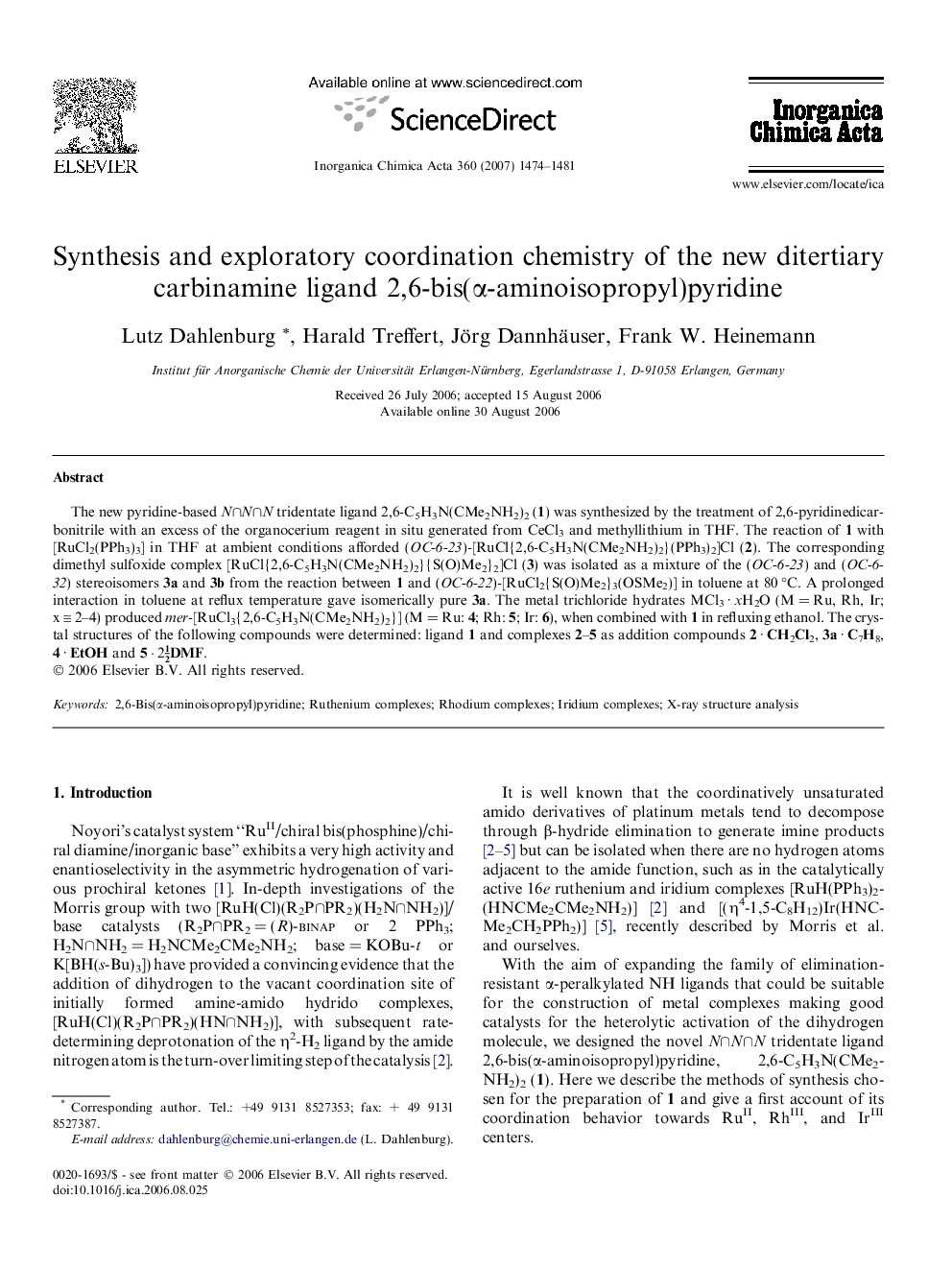| Article ID | Journal | Published Year | Pages | File Type |
|---|---|---|---|---|
| 1311666 | Inorganica Chimica Acta | 2007 | 8 Pages |
The new pyridine-based N∩N∩N tridentate ligand 2,6-C5H3N(CMe2NH2)2 (1) was synthesized by the treatment of 2,6-pyridinedicarbonitrile with an excess of the organocerium reagent in situ generated from CeCl3 and methyllithium in THF. The reaction of 1 with [RuCl2(PPh3)3] in THF at ambient conditions afforded (OC-6-23)-[RuCl{2,6-C5H3N(CMe2NH2)2}(PPh3)2]Cl (2). The corresponding dimethyl sulfoxide complex [RuCl{2,6-C5H3N(CMe2NH2)2}{S(O)Me2}2]Cl (3) was isolated as a mixture of the (OC-6-23) and (OC-6-32) stereoisomers 3a and 3b from the reaction between 1 and (OC-6-22)-[RuCl2{S(O)Me2}3(OSMe2)] in toluene at 80 °C. A prolonged interaction in toluene at reflux temperature gave isomerically pure 3a. The metal trichloride hydrates MCl3 · xH2O (M = Ru, Rh, Ir; x ≅ 2–4) produced mer-[RuCl3{2,6-C5H3N(CMe2NH2)2}] (M = Ru: 4; Rh: 5; Ir: 6), when combined with 1 in refluxing ethanol. The crystal structures of the following compounds were determined: ligand 1 and complexes 2–5 as addition compounds 2 · CH2Cl2, 3a · C7H8, 4 · EtOH and 5·212DMF.
Graphical abstractCombination of 2,6-pyridinedicarbonitrile with CeCl3/MeLi gave the new pyridine-based N∩N∩N tridentate ligand 2,6-C5H3N(CMe2NH2)2 which reacted with PPh3 and Me2SO complexes of RuII and the hydrated metal trichlorides of Ru, Rh, and Ir to produce mer-coordinated derivatives.Figure optionsDownload full-size imageDownload as PowerPoint slide
